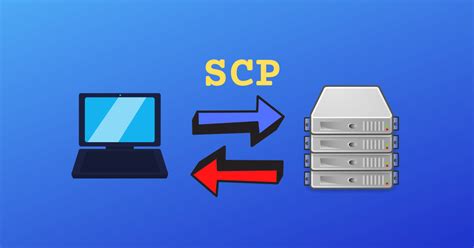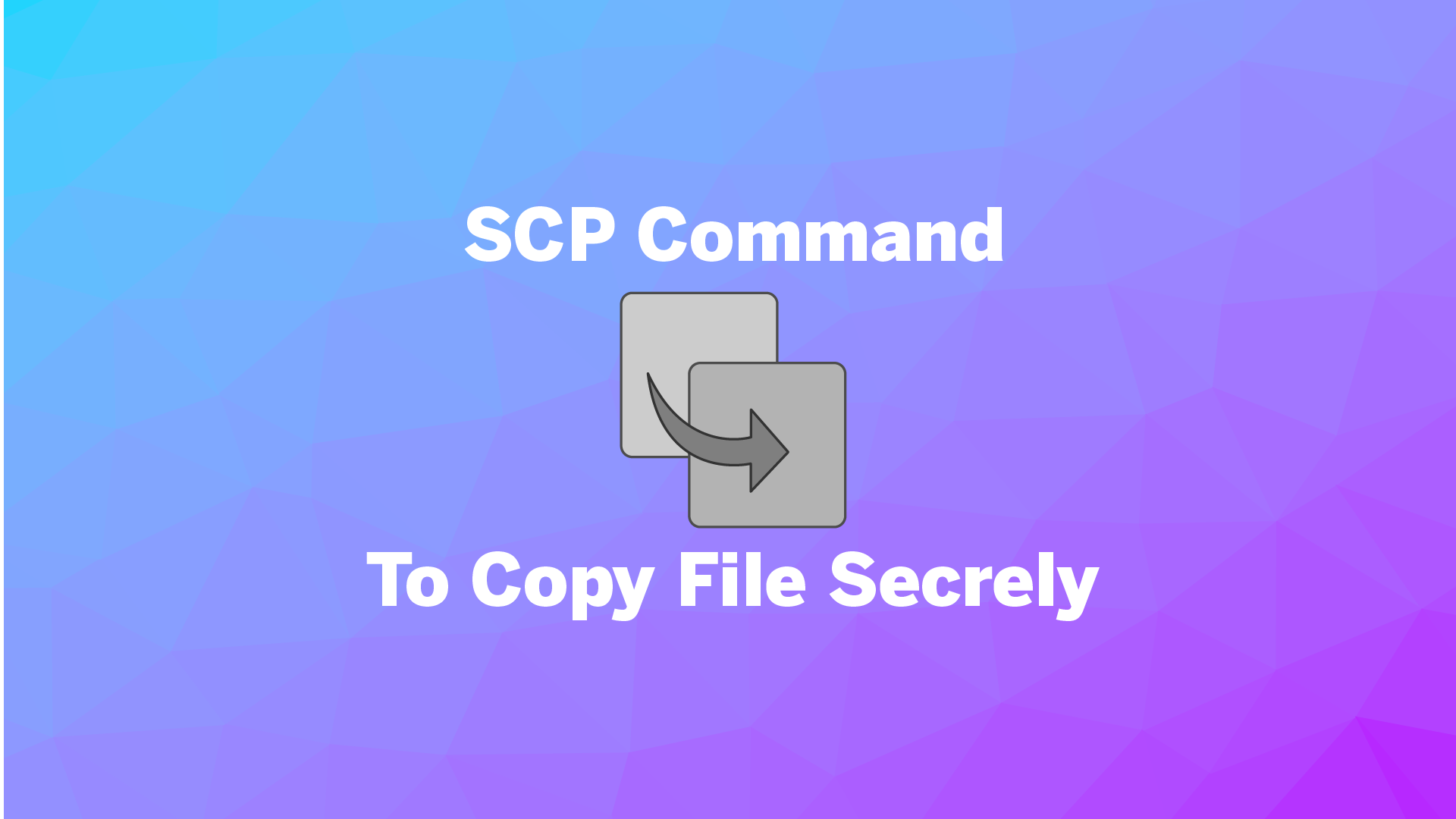SCP
What is scp
SCP, or Secure Copy Protocol, is a command-line utility in Unix-like operating systems, including Linux, designed for secure file transfers. It facilitates the transfer of files between a local host and a remote host or between two remote hosts over a network. SCP uses SSH (Secure Shell) for data encryption and authentication, ensuring that transferred data remains confidential and secure from unauthorized access or interception.
One of the key features of SCP is its simplicity and ease of use. Users can transfer files with just a single command, specifying the source and destination locations. SCP supports both interactive and batch mode operations, making it suitable for both manual and automated file transfers. Additionally, SCP preserves file attributes such as permissions and timestamps during the transfer, ensuring that the integrity of the data is maintained.
Moreover, SCP offers advantages over other file transfer protocols due to its security features. By leveraging SSH, SCP encrypts the data being transferred, protecting it from eavesdropping and tampering. It also supports various authentication methods, including password-based authentication and public key authentication, allowing users to choose the most suitable method based on their security requirements. Overall, SCP provides a reliable and secure solution for transferring files over networks, making it a preferred choice for system administrators and users who prioritize data security and integrity.
(scp = SSH + file transfer)


How to install scp
SCP utilizes the ssh protocol so there a 2 main packages that needs to be installed
Client Side
sudo apt install openssh-client
Server side
sudo apt install openssh-server
Termomonlogy and Concept
Secure Shell (SSH): SCP relies on SSH for secure communication between hosts. SSH provides encryption, authentication, and integrity verification for data transferred via SCP.Client-Server Architecture: SCP operates in a client-server architecture. The client initiates the file transfer request, and the server responds by transferring the requested files.Authentication Methods: SCP supports various authentication methods, including password-based authentication, public key authentication, and host-based authentication.File Transfer: SCP allows for secure transfer of files between a local host and a remote host or between two remote hosts. It preserves file attributes such as permissions, timestamps, and ownership during the transfer.Syntax: SCP commands typically follow a simple syntax, specifying the source file or directory and the destination file or directory. For example:scp source_file user@host:destination_path.Recursive Copy: SCP supports recursive copying, allowing users to transfer entire directories and their contents recursively with a single command.Port Number: By default, SCP uses port 22 for communication, the same port used by SSH. However, the port number can be customized if necessary.Error Handling: SCP provides error handling mechanisms to notify users of transfer failures, permission issues, or other errors encountered during the file transfer process.Batch Mode: SCP can be used in batch mode, allowing for automated file transfers without user interaction. This is useful for scripting and automated tasks.Security: SCP ensures the security of transferred data by encrypting it during transmission, protecting it from eavesdropping and tampering.
Copy a file
FROM Remote Server to Local Computer
Copy the remote file bakup_car_inventory.sql to a local folder
scp usernameremote@ip.adress.remote.server:/path/to/REMOTE/folder/bakup_car_inventory.sql /path/to/LOCAL/folder/
Note:ip.adress.remote.server could also be a hostname
And filenames with spaces
scp usernameremote@ip.adress.remote.server:"/path/to/REMOTE/folder/bakup food inventory.sql" /path/to/LOCAL/folder/
And specify a port number, in this case 2222
scp -P 2222 usernameremote@ip.adress.remote.server:"/path/to/REMOTE/folder/bakup food inventory.sql" /path/to/LOCAL/folder/
Or specify a private key
scp -i /path/to/private/key usernameremote@ip.adress.remote.server:"/path/to/REMOTE/folder/bakup food inventory.sql" /path/to/LOCAL/folder/
Some more parameter are
-v
Verbose output, useful for debugging
-C
Compression, copy a large files
FROM Local Computer to Remote Server
Copy local file, file.sql, to remote server/computer
scp /path/to/local/file.sql usernameremote@ip.adress.remote.server:/path/to/remote/directory/
Copy a folder
FROM Remote Server to Local Computer
This copy the folder folderfar(including the the folder folderfar into foldernear. The source directory itself is copyied!!!
scp -r usernameremote@ip.address.remote.server:/path/to/REMOTE/folderfar /path/to/local/foldernear/
Caution here, without trailing slash source directory. The source directory is NOT copied
This copy the content of folder folderfar
scp -r usernameremote@ip.address.remote.server:/path/to/REMOTE/folderfar/ /path/to/local/foldernear/
FROM Local Computer to Remote Server
Copy local folder foldernear to remote server/computer. The source directory itself is also copied
scp -r /path/to/local/foldernear usernameremote@ip.address.remote.server:/path/to/REMOTE/folderfar/
Caution here, without trailing slash source directory.
Copy the content of folder foldernear to remote server/computer. The source directory itself is NOT copied!!!
scp -r /path/to/local/foldernear/ usernameremote@ip.address.remote.server:/path/to/REMOTE/folderfar/
Commands
| DESCRIPTION | COMMAND |
|---|---|
|
Copy a file FROM Remote Server to Local Computer |
scp username@hostname:/path/to/REMOTE/folder/bakup_file.sql /path/to/LOCAL/folder/ OR scp username@ip_adress:/path/to/REMOTE/folder/bakup_file.sql /path/to/LOCAL/folder/ |
|
Copy a file FROM Local Computer to Remote Server |
scp /path/to/local/file.sql username@hostname:/path/to/remote/directory/ OR scp /path/to/local/file.sql username@ip_adress:/path/to/remote/directory/ |
|
From Remote to Local Computer folderremote1 will be copied into folderlocal6, and the structure will be preserved. Source folder will be included |
scp -r username@remote_server:/path/to/remote/folderremote1 /path/to/local/folderlocal6/ |
|
From Local Computer to Remote folderlocal1 will be copied into folderremote6, and the structure will be preserved. Source folder will be included |
scp -r /path/to/local/folderlocal1 username@remote_server:/path/to/remote/folderremote6/ |
|
From Remote to Local Computer folderremote1 will be copied into folderlocal6, and the structure will be preserved. The content of the source folder included The source folder is EXCLUDED |
scp -r username@remote_server:/path/to/remote/folder/ /path/to/local/folder/ |
|
From Local Computer to Remote folderremote1 will be copied into folderlocal6, and the structure will be preserved. The content of the source folder included The source folder is EXCLUDED |
scp -r /path/to/local/folder/ username@remote_server:/path/to/remote/folder/ |
FAQ
SSH vs SFTP
| Feature | SCP | SFTP |
|---|---|---|
| Protocol | SCP (over SSH) | SFTP (over SSH) |
| File Transfer | One-time, one-way file transfer | Interactive file management (two-way) |
| Interactivity | No (just copying files) | Yes (browse directories, rename files, etc.) |
| Resuming Transfers | No | Yes |
| Performance | Faster for large bulk transfers | Slightly slower due to interactivity overhead |
| Ease of Use | Simpler (one command for file copy) | More flexible, requires interactive session |

